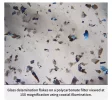These AI's—among their other defects—"lack the logical reasoning to tell if what they're saying is correct."
This is somewhat accurate. They’re not “AI” as such. I hate the use of that term. They are large language models. All they do is guess the most likely sequence of words based on the prompt (and the instructions fed to the LLM that preface every prompt). This leads to a lot of amazingly correct looking responses, but also a lot of hallucinations, as you say.
That explanation is predicated on a simple architecture. That is, a single LLM attached to a basic chatbot front end. Lately, the most common chat bots will query the web, parse the results and offer an explanation. This is referred to as “RAG” or retrieval automated generation. It ideally yields fewer hallucinations.
In addition to that there is often upstream query processing that may occur which could trigger responses from different models optimized for a particular task. An LLM specifically tuned to parse a query may then trigger a model that is optimized for math, reasoning, or code generation.
Regardless, your point is valid. Don’t trust a chatbot implicitly. However, one can ask a question, and then request references. I’ll often ask something like, “does the literature reflect blah conclusion”. Then “give me specific citations”. Depending on the question I may end up with a number of different studies or references. From there , if I care enough, I’ll run it all through notebookLM and look for specific support for whatever conclusion I’m chasing.
Several others have shared this opinion. However, IMO—looking through the lens of "accuracy"—I can't trust that the dosage/concentration of each substance is consistently reliable. Maybe it's close, or even dead accurate when "shaken" well. How can one be sure?
Different esters have varying levels of solubility in MCT oil. Presuming there is sufficient BB in the final solution to keep the esters in solution, there is no reason to believe that the solution would not become homogenous.
In my case, both test C and primo E 250mg/ml and 200mg/ml respectively require similar amounts of BB to remain in solution in MCT oil.






